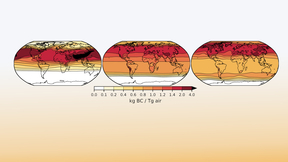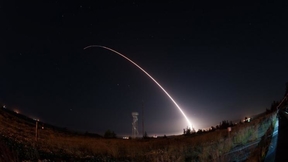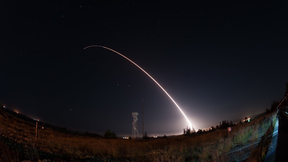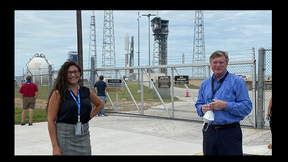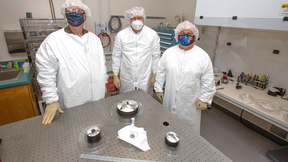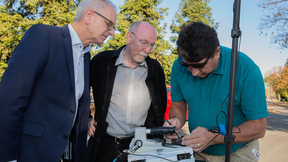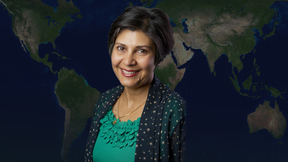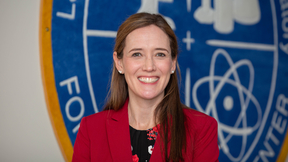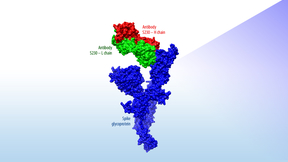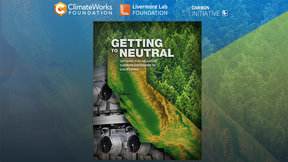Back
Global Security
Examining climate effects of regional nuclear exchange
A team of Lawrence Livermore National Laboratory (LLNL) researchers has found that the global climatic consequences of a regional nuclear weapons exchange could range from a minimal impact to more significant cooling lasting years. The five LLNL scientists examined the potential for global climate changes from large urban fires ignited in a hypothetical regional nuclear…
LLNL delivers ‘Scorpius’ pulsers amidst the pandemic
Lawrence Livermore National Laboratory (LLNL) researchers completed assembly and qualification of 16 prototype high-voltage solid state pulsed-power drivers (pulsers) in July, enabling the project to still meet the delivery schedule for the Scorpius radiography project, despite COVID-19 workplace restrictions. Eight of those pulsers were shipped to Sandia National…
Warhead replacement program passes first key milestone
Lawrence Livermore National Laboratory (LLNL) researchers passed their first program level key milestone in the W87-1 Modification Program (W87-1 Mod) on Sept. 24, keeping the program on schedule despite work stoppages due to the COVID-19 pandemic. The W87-1 Mod will replace the W78 thermonuclear warhead with a modified design of the W87 warhead. The W78 is nearing the end…
Warhead replacement program passes first key milestone
Lawrence Livermore National Laboratory (LLNL) researchers passed their first program level key milestone in the W87-1 Modification Program (W87-1 Mod) on Sept. 24, keeping the program on schedule despite work stoppages due to the COVID-19 pandemic. The W87-1 Mod will replace the W78 thermonuclear warhead with a modified design of the W87 warhead. The W78 is nearing the end…
LLNL delivers ‘Scorpius’ pulsers amidst the pandemic
Lawrence Livermore National Laboratory (LLNL) researchers completed assembly and qualification of 16 prototype high-voltage solid state pulsed-power drivers (pulsers) in July, enabling the project to still meet the delivery schedule for the Scorpius radiography project, despite COVID-19 workplace restrictions. Eight of those pulsers were shipped to Sandia National…
Lab earns 'A' grade in OPCW test
In another month-and-a-half, a score of chemists from Lawrence Livermore National Laboratory's Forensic Science Center (FSC) will start two weeks of long days to undertake the Organization for the Prohibition of Chemical Weapons (OPCW) environmental proficiency test. Livermore chemists have been taking the proficiency tests each October since 2001, with LLNL serving as one…
LLNL an OPCW-designated lab for biomedical samples
In addition to maintaining its Organization for the Prohibition of Chemical Weapons (OPCW) laboratory designation for analyzing suspect environmental samples, LLNL also is an OPCW-designated laboratory for the analysis of biomedical samples. (See "Lab earns 'A' in OPCW test) In this instance, OPCW inspectors have the ability to collect biomedical samples for cases of…
Lab assists in NASA launch of Mars rover
When an Atlas V-541 rocket lifted off Thursday morning (July 30) for Mars from Cape Canaveral Air Force Station with the Perseverance rover in tow, two Lawrence Livermore National Laboratory (LLNL) scientists had front row seats. The pair, Steve Homann and Jessica Osuna, researchers in the Lab’s National Atmospheric Release Advisory Center (NARAC), part of the Nuclear…
Lawrence Livermore, Tyvak Systems announce agreement to develop telescopes for nanosatellites
Lawrence Livermore National Laboratory (LLNL) and Tyvak Nano-Satellite Systems Inc. have reached a cooperative research and development agreement (CRADA) to develop innovative compact and robust telescopes for nanosatellites. The four-year, $2 million CRADA will combine LLNL’s Monolithic Telescope (MonoTele) technology with Tyvak’s expertise producing high-reliability…
Lab delivers innovation jolt with pulsed power modules
Lawrence Livermore National Laboratory (LLNL) researchers delivered four pulsed power modules to Nevada National Security Site (NNSS) this month, making excellent time despite many challenges presented by COVID-19. The modules are key elements in a novel diagnostic capability jointly developed by Los Alamos National Laboratory (LANL), NNSS and LLNL to be deployed in the…
Work resumes in support of stockpile modernization
The effort to resume hands-on work in support of stockpile modernization programs reached a major milestone May 7 with the successful execution of a focused experiment at the High Explosives Applications Facility (HEAF) at Lawrence Livermore National Laboratory (LLNL). The experiment is the first using high explosives at the Laboratory since Alameda County issued a shelter…
Planetary defenders validate asteroid deflection code
Planetary defense researchers at Lawrence Livermore National Laboratory (LLNL) continue to validate their ability to accurately simulate how they might deflect an Earth-bound asteroid in a study that will be published in the April issue of the American Geophysical Union journal Earth and Space Science. The study, led by LLNL physicist Tané Remington, also identified…
Laboratory researchers describe how antineutrino detectors could aid in nuclear nonproliferation efforts
A tiny, invisible particle could offer help for a big problem — the threat of nuclear proliferation. For more than six decades, scientists have been developing instruments for fundamental physics that can detect antineutrinos, particles that have no electric charge, almost no mass and easily pass through matter. Antineutrinos are emitted in vast quantities by nuclear…
LLNL, Argon Electronics sign cooperative research agreement to bolster realistic radiation training
Lawrence Livermore National Laboratory (LLNL) and Argon Electronics (UK) Ltd. have reached a Cooperative Research and Development Agreement (CRADA) that will facilitate the development of an ultra-realistic radiation simulator tool for first responders. The project, which has been funded by a Department of Energy (DOE) Technology Commercialization Fund (TCF) grant, will…
Huban Gowadia selected as Global Security director
Huban Gowadia, a longtime manager in national security programs for multiple government agencies, has been selected as the principal associate director of Global Security at Lawrence Livermore National Laboratory (LLNL). Lab Director Bill Goldstein made the announcement on Thursday. Gowadia was chosen for this key Laboratory senior leadership position following a broad…
Forensic scientist wins 'outstanding' early career award
A chemist who is the director of Lawrence Livermore National Laboratory’s (LLNL) Forensic Science Center is the recipient of the 2020 “Outstanding Early Career Achievement in Forensic Science Award.” The award, given to LLNL’s Audrey Williams, is presented annually by the American Academy of Forensic Sciences (AAFS) Past Presidents Council. This year’s award will be…
Lawrence Livermore researchers release 3D protein structure predictions for the novel coronavirus
As global concern continues to rise about a novel coronavirus spreading from China, a team of Lawrence Livermore National Laboratory (LLNL) researchers has developed a preliminary set of predictive 3D protein structures of the virus to aid research efforts to combat the disease. The team’s predicted 3D models, developed over the past week using a previously peer-reviewed…
New Lab report outlines ways California could reach goal of becoming carbon neutral by 2045
Lawrence Livermore National Laboratory (LLNL) scientists have identified a robust suite of technologies to help California clear the last hurdle and become carbon neutral – and ultimately carbon negative – by 2045. This groundbreaking study, “Getting to Neutral: Options for Negative Carbon Emissions in California,” was conducted as part of LLNL’s expansive energy programs…
SIGNAL wins 'best student game'
A wargame developed by University of California, Berkeley students, with a helping hand from Lawrence Livermore National Laboratory (LLNL) and Sandia National Laboratories (SNL) researchers, recently garnered first place at an international conference. The wargame, called SIGNAL, won the “best student game” among five finalists in the Serious Games Showcase and Challenge…
Lab physicist to lead APS’ plasma physics division
Lawrence Livermore National Laboratory (LLNL) physicist Denise Hinkel has been elected vice chair of the American Physical Society (APS) Division of Plasma Physics (DPP). Her term as vice chair began last month and is the first step in a four-year leadership commitment with APS, which culminates with service as APS-DPP chair in year three. As vice chair, Hinkel will lead…


